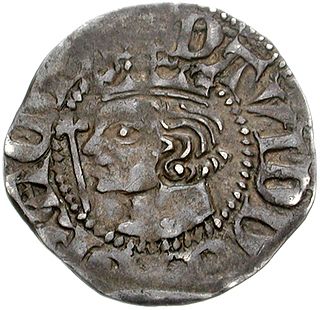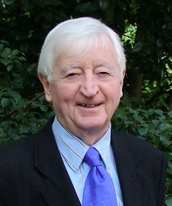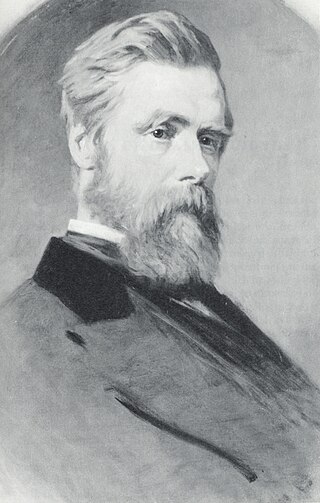David Ditchburn is a Scottish historian. He is a senior lecturer at Trinity College Dublin.
David Ditchburn is a Scottish historian. He is a senior lecturer at Trinity College Dublin.

David II was King of Scots from 1329 until his death in 1371. Upon the death of his father, Robert the Bruce, David succeeded to the throne at the age of five, and was crowned at Scone in November 1331, becoming the first Scottish monarch to be anointed at their coronation. During his childhood David was governed by a series of guardians, and Edward III of England sought to take advantage of David's minority by supporting an invasion of Scotland by Edward Balliol, beginning the Second War of Scottish Independence. Following the English victory at the Battle of Halidon Hill in 1333, King David, Queen Joan and the rump of his government were evacuated to France, where he remained in exile until it was safe for him to return to Scotland in 1341.
Sir Richard Maitland of Lethington and Thirlstane was a Senator of the College of Justice, an Ordinary Lord of Session from 1561 until 1584, and notable Scottish poet. He was served heir to his father, Sir William Maitland of Lethington, East Lothian, and Thirlestane, Berwickshire, on 15 October 1515, his father being one of the casualties at the Battle of Flodden. He held the political office of Keeper of the Great Seal of Scotland and was also the Keeper of the Privy Seal of Scotland, from 1563 to 1567, and was succeeded in this post by his son Sir John Maitland, 1st Lord Maitland of Thirlestane.
Donald Elmslie Robertson Watt FRSE was a Scottish historian and Professor Emeritus at St Andrews University.
James Dun's House is located in Aberdeen, Scotland. It is located at Schoolhill and was a popular museum and gallery with changing exhibitions, but in 2001 was converted into a hairdresser and cafe.

There has been a human presence in the area of Aberdeen since the Stone Age. Aberdeen as a city, grew up as two separate burghs: Old Aberdeen, the university and cathedral settlement, at the mouth of the River Don; and New Aberdeen, a fishing and trading settlement where the Denburn entered the Dee estuary.

Henry de Lichton [de Lychtone, Leighton] was a medieval Scottish prelate and diplomat, who, serving as Bishop of Moray (1414–1422) and Bishop of Aberdeen (1422–1440), became a significant patron of the church, a cathedral builder, and a writer. He also served King James I of Scotland as a diplomat in England, France, and Italy.
Dr Alastair Macdonald is a Scottish historian. He is the Mackie Lecturer in History at the University of Aberdeen.
Terry Brotherstone is a historian based in Scotland. He is a senior lecturer at the University of Aberdeen. The current staff directory page of the university website gives his designation as "Honorary Research Fellow, DHP School Administration". The "DHP" is the School of Divinity, History and Philosophy at the university.
Woodside is an area of Aberdeen. It came into existence as a quoad sacra parish within the parish of Old Machar in 1834, under an act of The General Assembly of the Church of Scotland of 31 May 1834, and was named for the principal residence of the area, Woodside House.
Edward James Cowan FRSE was a Scottish historian.

Government in medieval Scotland, includes all forms of politics and administration of the minor kingdoms that emerged after the departure of the Romans from central and southern Britain in the fifth century, through the development and growth of the combined Scottish and Pictish kingdom of Alba into the kingdom of Scotland, until the adoption of the reforms of the Renaissance in the fifteenth century.

The Renaissance in Scotland was a cultural, intellectual and artistic movement in Scotland, from the late fifteenth century to the beginning of the seventeenth century. It is associated with the pan-European Renaissance that is usually regarded as beginning in Italy in the late fourteenth century and reaching northern Europe as a Northern Renaissance in the fifteenth century. It involved an attempt to revive the principles of the classical era, including humanism, a spirit of scholarly enquiry, scepticism, and concepts of balance and proportion. Since the twentieth century, the uniqueness and unity of the Renaissance has been challenged by historians, but significant changes in Scotland can be seen to have taken place in education, intellectual life, literature, art, architecture, music, science and politics.

Portrait painting in Scotland includes all forms of painted portraiture in Scotland, from its beginnings in the early sixteenth century until the present day. The origins of the tradition of portrait painting in Scotland are in the Renaissance, particularly through contacts with the Netherlands. The first portrait of a named person that survives is that of Archbishop William Elphinstone, probably painted by a Scottish artist using Flemish techniques around 1505. Around the same period Scottish monarchs turned to the recording of royal likenesses in panel portraits, painted in oils on wood. The tradition of royal portrait painting in Scotland was probably disrupted by the minorities and regencies it underwent for much of the sixteenth century. It began to flourish after the Reformation, with paintings of royal figures and nobles by Netherlands artists Hans Eworth, Arnold Bronckorst and Adrian Vanson. A specific type of Scottish picture from this era was the "vendetta portrait", designed to keep alive the memory of an atrocity. The Union of Crowns in 1603 removed a major source of artistic patronage in Scotland as James VI and his court moved to London. The result has been seen as a shift "from crown to castle", as the nobility and local lairds became the major sources of patronage.
Events from the year 1881 in Scotland.
Events from the year 1871 in Scotland.

Agriculture in Scotland in the Middle Ages includes all forms of farm production in the modern boundaries of Scotland, between the departure of the Romans from Britain in the fifth century and the establishment of the Renaissance in the early sixteenth century. Scotland has between a fifth and a sixth of the amount of the arable or good pastoral land of England and Wales, mostly located in the south and east. Heavy rainfall encouraged the spread of acidic blanket peat bog, which with wind and salt spray, made most of the western islands treeless. The existence of hills, mountains, quicksands and marshes made internal communication and agriculture difficult. Most farms had to produce a self-sufficient diet of meat, dairy products and cereals, supplemented by hunter-gathering. The early Middle Ages were a period of climate deterioration resulting in more land becoming unproductive. Farming was based around a single homestead or a small cluster of three or four homes, each probably containing a nuclear family and cattle were the most important domesticated animal.

Andrew Hook, FBA, FRSE, is Emeritus Bradley Professor of English Literature at the University of Glasgow.
Graeme Morton is a Scottish academic historian who has occupied the Chair of Modern History at the University of Dundee since 2013.
Isobel Murray is a Scottish literary scholar, Emeritus Professor at the University of Aberdeen. She edited the work of Oscar Wilde and Naomi Mitchison. She also edited a series of interviews which she and her husband Bob Tait carried out with Scottish writers, and wrote a biography of the writer Jessie Kesson.

William Alexander LLD was a Scottish journalist and author. His most widely known novel Johnny Gibb of Gushetneuk, paints a vivid picture of economic and social relations in a rural parish in Aberdeenshire during the 1840s, against the background of the Disruption in the Scottish Kirk.